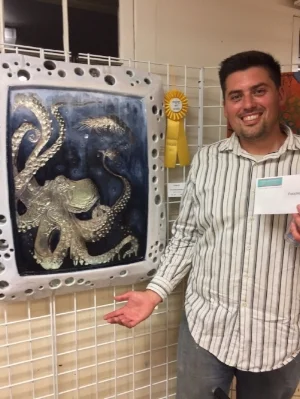Before you shoot me for discounting the human emotion or social injustices, let me clarify. I spend a significant portion of my life helping students create art. Like you would imagine, I often have students obsessing over which boy band member to draw and, left to their own devices, most teenage works of art would be comprise of celebrities, eyes, bleeding eyes, bleeding hearts, overly cute pets, various Halloween gore and mythical creatures all drawn with decidedly anime influences. You might think "Hey, it's their age and it's art and that's OK." And it is O.K. Some of the fore mentioned are rights of passage. Some we never grow out of. Some are just for fun. Subject matter is a function of preference and intended message, but an artists job is to flush out the intricacies and feel of a subject... to create greater aesthetic appeal, interest or even discomfort. 10 years of struggling to get students to see beyond their subject matter to the technical issues of style, depth, balance...etc, lead me to the rather abrupt saying "Subject matter doesn't matter." And what started off as a perfunctory way to move students beyond perpetually recreating cosmetic ad faces, somehow morphed into a much deeper philosophy for me. Here is why subject matter doesn't matter: the subject, whether a rock in a pile or an image for social justice, speaks for itself. The artist highlights a subject's interest, beauty or legitimacy by how they treat the work. The subject itself simply is. In the art world we tend to separate our selves from "The Work" wanting to believe it carries a life, a force of its own. As if "what" is made is some how more important than "how" it's made. Subject matter is often just a lens to see the broader scope of human contemplation. Interpretive understandings the viewer experiences comes from what the artist chooses to emphasize. In this regard, it has always been the artist that matters.

